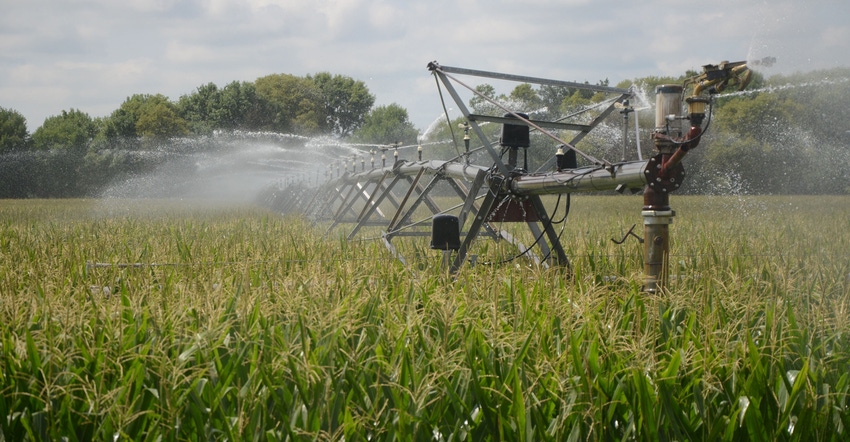June 24, 2019

New research from the University of Nebraska has found that one-third of studied fields achieved high crop yields without surpassing prescribed irrigation levels.
The study shows it’s possible to nearly maximize yields while adhering to the estimated amounts of irrigation needed to support those yields, the researchers said. Reaching 80% of potential yields is considered a reasonable goal for U.S. corn, the team said.
Conducted by researchers from the Daugherty Water for Food Global Institute and the University of Nebraska-Lincoln, the study collected data from Natural Resources Districts and through producer surveys.
While previous studies primarily relied on data from simulations or research farms, the new study used producer data from more than 500 corn and soybean fields in Nebraska. The researchers then developed a framework to diagnose current irrigation water use in relation to grain production in producer fields.
The team also found yields did not substantially vary among fields that used different types of irrigation scheduling. One type relied on the technology-intensive measurement of factors such as water balances and soil moisture. Another entailed simple visual assessments of plant status, and a third involved rudimentary methods such as fixed calendar dates or following a neighbor’s schedule.
However, fields using the technology-intensive approach better adhered to suggested irrigation limits. Those fields represented only 22% of the total studied, indicating ample opportunity to save irrigation water and potentially increase farm profits by adopting newer technologies, the team said.
Actual irrigation was similar to estimated irrigation requirements in more than half of the fields, suggesting that many producers are using their available irrigation wisely, said lead author Kate Gibson, a project manager with the Water for Food Institute. But the remaining proportion still could save a substantial amount of water.
“Potential irrigation water savings are greatest in years with above- or near-average precipitation,” said co-author Patricio Grassini, UNL associate professor of agronomy and horticulture.
Justin Gibson, postdoctoral researcher with the Water for Food Institute, said flexible irrigation equipment could help ensure the timely and precise delivery of water. This also could reduce unnecessary water use by excess irrigation, which can adversely affect water quality, contribute to greenhouse gas emissions and burden agricultural producers with unneeded costs, he said.
The team reported its finding in the journal Environmental Research Letters. Funding came from the Water for Food Institute, the Nebraska Corn Board and the Nebraska Soybean Board.
Source: UNL CropWatch, which is solely responsible for the information provided and is wholly owned by the source. Informa Business Media and all its subsidiaries are not responsible for any of the content contained in this information asset.
You May Also Like




